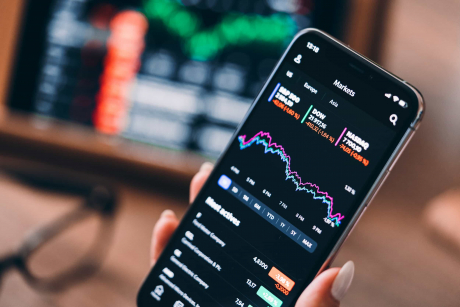SPACs (Special Purpose Acquisition Companies) have experienced an enormous increase in interest and activity recently, mainly, due to the unusual volatility of markets caused by the Coronavirus pandemic. More and more venture funds, private equity (PE) firms, and high-profile private investors form SPACs to go public and merge with firms whose management teams don’t want to or can’t take their companies public via a traditional IPO.
We take a deep dive into the critical characteristics of SPACs, especially, in comparison to initial public offerings (IPOs).

What Is a SPAC?
A special purpose acquisition company (SPAC), also known as a shell company or blank check company, is an investment vehicle that is a publicly traded entity with no commercial operations, created solely to raise funds via an initial public offering (IPO) with the aim of acquiring an existing company. SPACs must complete an acquisition within two years, otherwise, they have to give their funds back to investors.
According to PwC, “special purpose acquisition companies (SPACs) provide an alternative way for management teams and sponsors to take companies public. A SPAC raises capital through an initial public offering (IPO) with the intention of acquiring a private operating company.”
Even though SPACs started to exist in the 1990s, they have recorded an increased interest in popularity with a huge spike in the number of issuances in 2020 which was a record year when the total number of SPACs amounted to 248, growing by more than 300% over 2019 with 59 SPACs IPO filings. However, it seems that the year 2021 will be even more propitious for SPACs as a record-breaking number of 296 IPOs of special purpose acquisition companies were consummated only in the first quarter of 2021, according to the report published by law firm Katten Muchin Rosenman LLP.
To put the sharp surge of SPACs in 2020 into context, the average increase of SPACs from 2017 to 2019 was about $2 billion in comparison to the growth from the end of 2019 to today which has been an astonishing $51 billion.
As to proceeds generated by special purpose acquisition company (SPAC) IPOs, SPAC IPOs raised over $83 billion in 2020 which is almost twice as much as they raised in the past 10 years combined. As of August 2021, SPAC IPOs have brought approximately $117 billion in IPOs in the United States since the start of 2021, according to Statista.
Back to topHow Do SPACs Work?
With funds from their initial investors, SPACs are created to acquire an unspecified private company with money that was raised through an IPO. Initial investors called sponsors, receive a nominal investment in the SPAC which guarantees a 20% interest in the post-IPO company, known as founders' shares. The stake in the SPAC that remains is taken by individual and institutional investors, such as hedge funds or investment banks. What is worth mentioning is that the sponsors place the SPAC IPO proceeds in a trust account and don’t announce before the capital-raising phase what a private company is their target so other investors have no idea what company they eventually will be investing in.
Founders need to identify and finish a merger with a target company within the specified time frame, usually 18-24 months. During that process called “de-SPACing”, the SPAC IPO proceeds are held in an interest-bearing trust account and can’t be spent on anything other than an acquisition of the target company, however, in some cases, the shell company can use some of the earned interest as its working capital. If the SPAC fails to consummate a merger, it will return the IPO yield to its shareholders and liquidate.
Back to topThe SPAC Process
To make the most of the SPAC as an investment vehicle, you need to understand how the SPAC process looks like. There are 4 phases in the life of a SPAC:
- The Formation Phase
- The SPAC IPO
- The Target Company Selection Phase
- The SPAC Merger (The De-SPAC Phase)
The Formation Phase
The SPAC sponsors setting up a SPAC provide nominal invested capital, or in other words founder shares and pay for the first part of the third party setup costs. The sponsor capital, commonly called, skin-in-the-game, amounts to approximately 7% of the preconcerted IPO size, while the setup costs typically range from $550,000 to $900,000.They need to be paid by the SPAC initiator in advance of the IPO, however, they may be returned to the SPAC founders at their discretion.
The SPAC shares provide founders and the general public with similar voting rights, with the exception that founders have the exclusive right to appoint SPAC directors, while warrants don’t give any voting rights and warrant holders can exercise them only as a whole. In terms of voting rights, warrants are very similar to options as they guarantee their holders the right to purchase additional shares in the future, but at a discounted price.
Moreover, with each share, investors get a redemption right allowing them to receive a return of their investment together with interest which they can exercise when they don’t accept the target company chosen by the SPAC founders.
Once a SPAC is being created, the management team is usually composed of a CEO, a CFO, and three independent board members. In fact, since the CEO and the CFO are officers, they may or may not be members of the Board. As SPACs aren’t operating companies, the SPAC board plays a key role in terms of the SPAC’s attractiveness for prospective investors and its future IPO success.
Depending on the tax situation, the SPACs are typically registered in Delaware, Cayman Islands, or BVI, according to the SPAC Consultants.
The SPAC IPO
In an IPO, the SPAC issues “units'' which are subject to the SEC review process and are registered on a Form S-1. It should be noted that each unit is made up of a share of common stock and a fraction of a warrant. Founders usually hold 20% of the outstanding shares while the public shareholders can purchase approximately 80% of the SPAC “units”.
With the help of auditors, legal counsels, and investment bank(s), the prospectus is drafted and a SPAC applies to the Securities and Exchange Commission (SEC) for the approval and later publishing of the prospectus. Referred to as S1, the prospectus includes information about the SPAC’s board members, size of IPO, shareholders, statutory information, cost structure, and its acquisition strategy.
At this juncture, the sponsors hand over their sponsor capital to the SPAC that is paid on a trust account.
Once the SEC approves the SPAC prospectus, the way is opened for a roadshow when the CEO, the Chairman (if any), and a high-ranking member of the underwriting bank approach the right institutional IPO investors to fill in the order book.
On the day of the SPAC IPO, institutional investors secure funds in exchange for the SPAC units. To obtain one unit representing one share and one warrant which can be exercised after the acquisition of the target company, they typically need to invest $10, according to common market practice. However, some SPACs price their units differently. In addition to the units, the SPAC sponsors are entitled to 20% of the pre-IPO SPAC founder shares that are also listed on the day of IPO.
Just after an IPO, the SPAC starts trading on the open market, that is NYSE or NASDAQ, under a ticker incident to the name of the SPAC itself, and consequently, becomes a publicly-traded company, and any investor, both retail and institutional, can purchase its units, however, at this point, nobody knows what target company the SPAC will resolve to acquire.
As to the proceeds gained in an IPO, they are typically secured in an untouchable until acquisition trust account that earns interests as the SPAC seeks a target company for acquisition.
The Target Company Selection Phase
After the SPAC goes public, the management team begins to seek target companies that are aligned with the SPAC’s acquisition strategy defined in the prospectus. The target company undergoes proper due diligence and audit that is focused on verifying whether the company is suitable for acquisition or not.
The time frame that the SPAC has to acquire a target company (unless it is extended) is constricted to 18 or 24 months. If the SPAC doesn’t meet this deadline, it liquidates and investors receive all invested money. As the time frame is limited, it creates urgency for the SPAC founders to merge with potential target companies which may influence negotiations between the parties and give an edge to targets over potential SPAC suitors.
While negotiating with the target company shareholders, the SPAC management team has three alternatives on how to complete the shares buying process, however, they can combine all of them as well. A merger can be based on cash payment, a share swap, asset-backed financing, or a mix of all. The shareholders of the private company receive cash payment which is paid from the IPO yield placed on a trust account. A share swap is based on the exchange of the share of the target company for freshly issued SPAC shares.
And last but least, the target company receives asset-backed debt financing from banks that lend money based on the collateral. In case of a share swap option, the IPO-proceeds, secured on a trust account, may be used as operation capital after the consummation of the merger which could lead to potential bullish momentum for the shareholders.
The SPAC Merger (The De-SPAC Phase)
The de-SPACing process, an extremely intensive and critical phase in the lifecycle of a SPAC, starts when a SPAC identifies and announces a business combination with a target company. At this stage, the SPAC founders and target company owners enter into negotiations to determine the conditions of the acquisition such as the transaction terms, structure and target’s valuation. However, before the envisaged acquisition is completed, it eventually needs to be approved by the SPAC shareholders (IPO investors and retail investors).
At times, it happens that the agreed terms of the acquisition transaction exceed the initial SPAC proceeds which typically cover only from 25% to 35% of the target purchase price. Consequently, to consummate the acquisition, the parties need to go to the market to raise additional funds, usually by Private Investments in Public Equity (PIPEs) which are additional equity commitments from either new institutional investors or those who already participated in the SPAC.
Notwithstanding PIPE investors purchase equity without redemption rights, due to PIPEs they have a chance to receive greater exposure and growth potential by buying additional equity at a set price, typically discounted price rather than market price. Additionally, since the SPAC founders have already identified a target company, the investment is more attractive and offers a more predictable return on investment.
Most importantly, as the redemption decision and the vote aren’t mutually exclusive, the SPAC investors can take the vote on the approval of an acquisition, and simultaneously set out to redeem their shares to recoup the investment. It’s worth noting that even in the case of investor redemptions or lack of the SPAC shareholders approval, the SPAC is allowed to seek another target company, yet, it still has to abide by the time frame designed at its IPO.
Once the shareholders approve the acquisition, the SPAC merges with the acquired company which officially becomes a publicly-traded company. The Special Purpose Acquisition Company assumes the name of the acquired company and exchanges the ticker to the new one which reflects the acquired target name. At this point, the de-SPACing process is finished as the key objective of the erected SPAC has been achieved and the shares of the newly listed company trade like any other publicly-traded company.
Back to topThe SPAC Market
Driven by the high liquidity, the US has experienced a massive influx of SPACs in recent years, especially in 2019 and 2020 with $13.1 billion and $80.4 billion of issuance volumes, respectively. Even though the numbers from May 2021 amounted to $98.5, exceeding last year’s spectacular numbers by approximately a fifth, the unprecedented upward trend for SPACs has started to slacken its pace since April, according to Deloitte.
The rapidly growing SPAC market has some key leitmotifs which should be highlighted.
SPACs merge with high growth and headline-grabbing businesses.
SPACs with a substantial high growth potential tend to focus on technology-based game-changing companies, attracting media attention and grabbing the headlines. For instance, Social Capital Hedosophia founded by Chamath Palihapitiya merged with Virgin Galactic in July 2019. This business combination was valued at $1.5 billion, forming the only publicly traded and world’s first commercial spaceflight company.
SPACs merge with businesses with lower growth, but more stable.
SPACs target not only groundbreaking businesses, but also companies with not so fast growth potential, but of high quality, providing them with a chance to go public. For one, Collier Creek Holdings and Utz Quality Foods, LLC, family-owned manufacturer of branded salty snacks with more than 40 years of continued growth combined to form Utz Brands, Inc.
SPACs merge with businesses with a mission.
Now that some SPACs are mission-oriented, they tend to target businesses focused on the environment, social issues, or governance. For example, Switchback Energy Acquisition Corporation closed its merger with a leading electric-vehicle charging network company ChargePoint Inc. valued at $2.4 billion.
Back to topWhat’s driven the SPAC rapid growth in 2020?
There are certain factors that are the key drivers standing behind the latest increase in popularity of SPACs, some of them are the following:
Public market valuations have reached record levels.
As valuations of publicly traded companies have hit record-breaking levels, the public-private valuation gap is getting wider and wider, spurring private firms to take advantage of the present market conditions. Tempted by all-time high valuations, private companies can use SPACs as the vehicle which can help them go public and capitalize on their shares.
SPACs offer pricing confidence in an unsteady market.
As the Covid-19 pandemic hit, it caused an enormous pricing uncertainty on financial markets which impacted immensely private firms planning to go public. They were faced with unprecedented unpredictability that SPACs managed to lower as they provide companies with a priori price discovery and definiteness with regard to the proceeds. SPACs reducing various risks of going public may encourage owners of private companies to explore this exit opportunity.
Plenty of unspent private capital on the market.
As of June 2020, there was $1.8 trillion of unspent private capital which increased the interest of various sorts of funds in investment opportunities for private capital. Notably, SPACs can be a perfect exit opportunity for private equity funds seeking investment options.
A wide pool of private companies is ready to be publicly listed.
Over the last two decades, the number of publicly traded companies has substantially decreased, expanding the pool of private companies at a later stage accessible for SPACs to acquire, and as a result, increasing the number of formed SPACs.
Credible high-profile SPAC sponsors experienced in the target industry.
SPAC founders are not random people, but typically seasoned operators in the industry that the SPAC intends to enter, in that they may provide the de-SPACed company with valuable and extensive industry-specific expertise, taking on various leadership roles that range from CEO to board members. The experienced management team is an enormous asset that may drive the success of the target firm.
Back to topWhat Attracts Investors to a SPAC?
In the report prepared by law firm Katten Muchin Rosenman LLP, “SPAC to The Future: Despite Slowdown, SPACs Continue to Be Viewed as Favorable Investment Opportunities”, it was stated that investors’ decisions about whether to engage in a SPAC’s IPO are based on several factors.
Chief Factors to Engage in a SPAC Deal
- A clear idea of shareholder value
- Previous experience in industry or sector
- Previous SPAC experience
- Having an experienced management team in place
- Having the right financial advisors
- Having the right legal team in place
- Advance due diligence
- Portfolio fit
As the top factors, investors rank creating shareholder value in a possible merger with a target company and an experienced management team with previous experience in the sector or industry, aligned with the previous SPAC experience.
Strictly speaking, 63% of respondents ranked a clear idea of shareholder value as very important and 25% as moderately important, giving a total of 90%, which turned out to be the most important factor. 89% and 83% of respondents deem previous experience in the industry or sector and having an experienced management team in place as very or moderately important, respectively.
Additionally, having the right financial advisors' legal team is very or moderately important to 80% of respondents, with the proviso that 58% and 32% of those respondents deem these factors as very important, respectively.
As it turned out, advance due diligence is very important to 40% of respondents and moderately important to 44%, which in total gives 84%. The survey showed that the portfolio fit is the least important to investors with just 73% of respondents considering it as very or moderately important.
Back to topWhat Turns Investors Away from SPACs?
Main Reasons to Pass on SPAC Deal:
- The participants do not seem financially committed to the deal
- Uncertainty regarding financials
- Falling above a certain deal size
- Falling below a certain deal size
- Uncertainty regarding legal matters
- Not a great fit for our firm or management team expertise
Nearly half of respondents, exactly 48%, stated they will refuse to invest in a SPAC when the participants seem to be financially uncommitted to the deal. Furthermore, 35% of investors perceive uncertainty regarding financials and falling above a certain deal size as valid reasons for rejecting a SPAC investment, while 32% of respondents are willing to turn down a SPAC deal when a transaction falls below a certain deal size.
What’s more, 28% of investors consider uncertainty regarding legal matters as a sufficient occasion to dismiss a blank check company deal, whereas 27% of them would give up such a transaction, when they think it wouldn’t be a great fit for their firm or management team expertise.
The Bottom Line
Even though the total number of SPACs rose in 2020 by more than 300% over 2019, the first quarter of 2021 was even more buoyant as 296 IPO of SPACs were completed which is 48 more than last year. According to Statista, the second quarter of 2021 with sixty-one new SPAC IPOs seems to show that the cadence of new issuances is slower and the SPAC market may be experiencing the cooldown.
According to law firm Katten Muchin Rosenman LLP’s new survey report, the sentiment is still optimistic since “75 percent of investors who had participated in at least one SPAC transaction – as sponsors, investors, advisors, or underwriters – said they expected SPAC activity to increase through next year,” the future of SPACs is still unclear.
Just now, CNBC reported that clouds are gathering over Bill Ackman’s SPAC, Pershing Square Tontine Holdings head, as it was hit with a lawsuit alleging that the shell company isn't an operating company, but an investment firm and it should abide by the Investment Company Act of 1940. The SPAC believes that the lawsuit is without merit, but in case of the court defeat, the whole SPAC space would need to think over its business model.
All in all, SPACs are an interesting investment vehicle, however, there are risks associated with such transactions, therefore investors need to give very careful consideration to each potential opportunity before making any investment decisions.
Like our content? Follow BUSINESS POWERHOUSE on LinkedIn, Twitter, Facebook, Instagram, and Pinterest to stay up-to-date on our latest articles.
Disclaimer:
The Content is for informational purposes only, you should not construe any such information or other material as legal, tax, investment, financial, or other advice. Nothing contained on our Site constitutes a recommendation, solicitation, , endorsement, or offer by BUSINESS POWERHOUSE or any third party service provider to buy or sell any securities or other financial instruments.
Back to topAuthor: Justine Ilone Siporski is Editor-in-Chief & CEO of BUSINESS POWERHOUSE, the founder and CEO of LANGUAGE EMPIRE, coach, trainer, investor, and columnist dedicated to the advancement of entrepreneurs, investors and the C-suite (CEOs, CMOs, CFOs, CIOs). Her key mission is to support leaders, business people, and investors in achieving their highest potential, making the right business and investing decisions, and expanding their horizons.







Comments